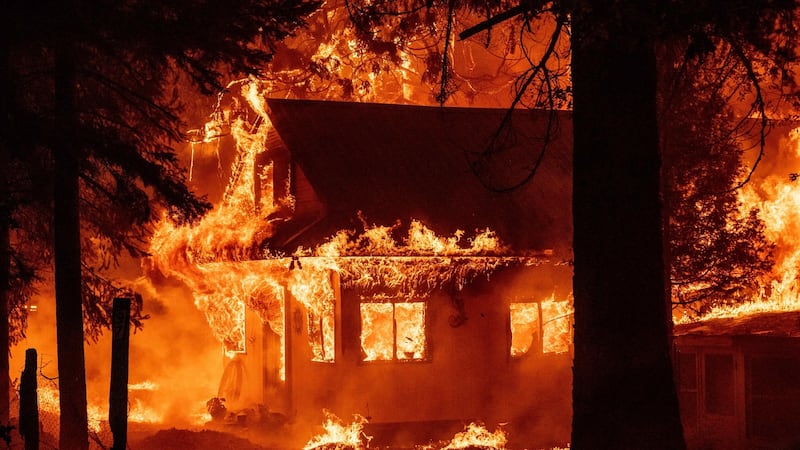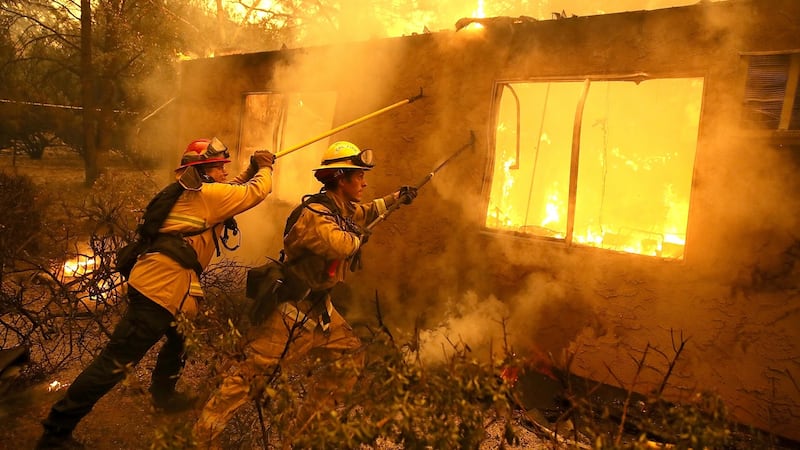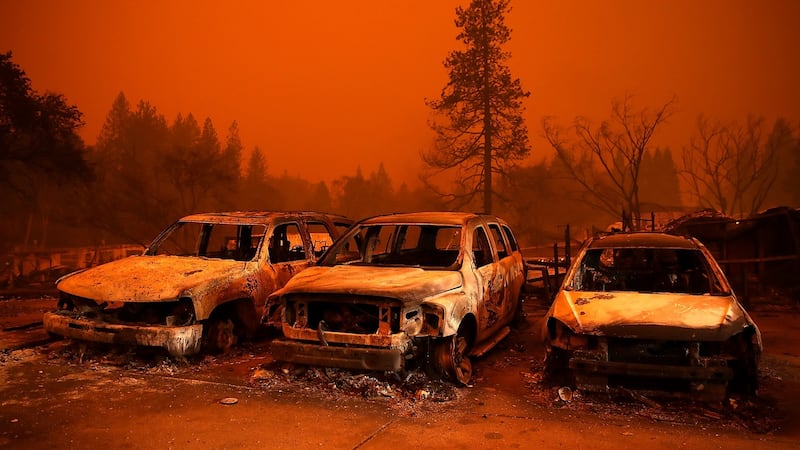“They’re gone,” says Dale Loura (63), pointing at various plots of land around his own. “They’re gone . . . and they’re gone.”
He used to be surrounded by neighbours, until a fire tore through the northern California town of Paradise in November 2018. It killed 86 people, many stuck on roads as they tried to escape, in what was the deadliest fire in Californian history.
Those who Loura is referring to made it out safely, but they are not coming back. Like most who once lived here, they have moved on. “It’s not lonely here,” Loura says, looking out from the front step of his new home. “But it is small.”
As he speaks, a thick plume of smoke rises, barely 32km away. The Dixie Fire has been raging since July 13th, and razed 80,000 hectares. Out of sight, more than 3,000 firefighters are battling to get things under control.

Mercifully, though it started in almost the same place as 2018’s devastating Camp Fire, the weather is so far pushing this year’s flames away from Paradise. But the sights and the smell, which fills your chest and seems to stick to your skin, bring this town back to its darkest day.
“People are very, very much on edge,” says Steve Crowder, the mayor of Paradise, who lost his home and business in 2018. “At night, you can go to just about any place in Paradise and see the glow over the hill. It terrorises people. It terrorises me, to a point.”
He says he finds reassurance by speaking to Cal Fire, the state’s fire and forestry department, which through successive aggressive fire seasons has developed a world-renowned organisational playbook for tackling blazes and communicating with local officials and the public.
Using the lessons of the past, this year Cal Fire is deploying a new fire behaviour-modelling system that projects its path and incorporates fuel and weather data to help put teams into position.
Fairgrounds
Cal Fire co-ordinates a military-base-like deployment from the fairgrounds in nearby Chico, where many former Paradise residents now live. More than 200 fire engines from across the state are ready to go to fight the Dixie Fire.
They are lined up ahead of schedule: fire “season” in California, an increasingly redundant term, traditionally would not intensify until later in the year.
“There’s no real timeframe any more,” says Cal Fire’s Capt Adam Johnson, who has battled similar blazes for 15 years. “California is just a year-long fire season. It’s getting more and more difficult for firefighters.”

The fires in 2018 were eclipsed in scale, though not deadliness, by the record-breaking burn in 2020, when 1.6 million hectares went up across the state. Regions south of the wildfires, including San Francisco, became blanketed in an apocalyptic red smog for days.
This year is already on track to be another record breaker. The number of hectares burnt in California so far this year has outpaced what was seen at the same stage in 2020.
Further north, the Bootleg Fire in the state of Oregon has swallowed 161,000 hectares – causing air quality to deteriorate as far away as New York.
According to the National Interagency Fire Center, there were 86 fires actively burning as of last Sunday, covering more than 560,000 hectares.
Spectre of tragedy
While Paradise is now theoretically afforded some level of protection – the scale of the 2018 fire reduces the probability of a similar event occurring for the next five years, one forestry expert says – the spectre of another tragedy hangs over the town, though some suppress their concern.
“I mentally never left,” says Nicki Jones, who moved back to Paradise in November 2020, just before the second anniversary of the Camp Fire, after having her home on the town’s picturesque ridge quickly rebuilt. “I never had one second when I said I’m not going to go back.”

Jones owns a deli and wine bar, and a clothing store, both housed in one of the few commercial buildings spared. She calls it a place to feel “normal”.
“I’m 76 years old. I’m very healthy, very energetic. I can’t spend my life worrying about it. Well, I could, but I choose not to.”
After the Camp Fire, the population of Paradise went from almost 30,000 to just 1,500. Two-and-a-half-years later, there are now more than 6,000 people here – and enough homes to house about 5,000 residents more are “on the way”, Crowder says.
Those who return will find a town rebuilding better. There are plans for fibre internet, a modern irrigation system and houses built to more recent fire-resistant standards.
Still, like many, Crowder is frustrated at the slow progress made outside the town to protect the region, where barely a handful of hectares have been cleared. Years of drought and hotter temperatures mean the phrase “tinder box” is thrown around to describe large swathes of California. But common sense around clearing high-risk areas has met bureaucracy and politics, says forestry expert Bill Stewart, from UC Berkeley.
“The state government and the Forest Service had pronounced these very large targets for fuels reduction,” he says, “and they’re just coming nowhere close to that.”
In Jen’s Place, a bar in Paradise, patrons talk of a different kind of rebuilding that is harder to measure. Todd Dilley (52) reels off a list of friends who, as he himself did, went through a divorce in the wake of fires. Like others whose homes were remarkably spared, he talks of “survivors’ guilt” weighing heavily.
“This town has PTSD,” he says. – Copyright The Financial Times Limited 2021










